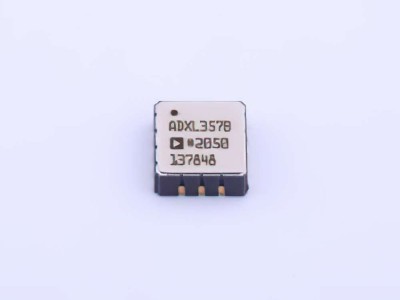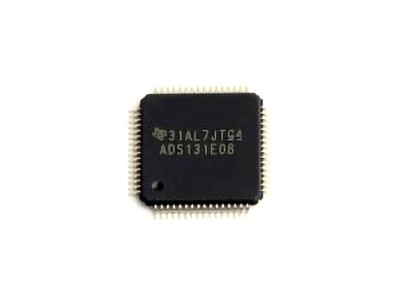This QD guide explores the common troubleshooting issues encountered when working with the ADUC831BSZ microcontroller, along with practical solutions. Whether you’re dealing with hardware issues, software glitches, or peripheral interfacing problems, this article offers step-by-step guidance to help you resolve challenges and enhance your development process.
ADUC831BSZ troubleshooting, ADUC831BSZ solutions, microcontroller debugging, ADUC831BSZ issues, hardware issues, software errors, ADUC831BSZ troubleshooting guide, ADUC831BSZ common problems, microcontroller repair, ADUC831BSZ hardware solutions
Identifying and Addressing Common ADUC831BSZ Troubleshooting Issues
The ADUC831BSZ is a highly popular microcontroller used in various embedded applications, offering precision analog-to-digital conversion, Power efficiency, and high processing speed. However, like any complex piece of hardware, users often encounter specific troubleshooting issues during their development process. This section will guide you through the most common issues and how to fix them effectively.
1. Power Supply Issues
A major cause of instability or malfunction in embedded systems using the ADUC831BSZ is inadequate or unstable power supply. The ADUC831BSZ microcontroller is sensitive to fluctuations in voltage and current, and even minor power supply issues can cause erratic behavior or failure to boot.
Symptoms:
The microcontroller does not power up.
The system resets intermittently.
Erratic behavior or malfunctioning peripherals.
Troubleshooting Steps:
Check the power source: Ensure that the voltage provided matches the requirements of the ADUC831BSZ (typically 2.7V to 5.25V). If you are using an external regulator, verify that it is stable.
Measure the power supply levels: Use a multimeter or oscilloscope to verify that the supply voltage is steady and does not fluctuate under load.
Check for voltage drops: Sudden drops in voltage can indicate issues with the power distribution network or improper grounding. Ensure that the ground paths are robust and have low resistance.
Verify decoupling capacitor s: Insufficient or incorrectly placed decoupling capacitors can lead to instability. Ensure that there are adequate capacitors near the microcontroller’s power pins to filter out noise and smooth the voltage.
2. Programming and Bootloader Errors
Programming errors are not uncommon when working with microcontrollers, especially when the system fails to load the firmware correctly. This could be due to issues in the connection between the programmer and the microcontroller, or problems in the bootloader itself.
Symptoms:
The microcontroller does not respond to programming commands.
Firmware upload fails.
Unexpected resets or hangs during firmware operation.
Troubleshooting Steps:
Check Communication interface : If using a UART or USB-based programmer, verify that the connections are intact. Loose wires or bad soldering can prevent communication.
Inspect the bootloader: Ensure that the ADUC831BSZ’s bootloader is correctly set up and functional. If possible, reprogram the bootloader using a known good programmer.
Verify baud rate and settings: Incorrect baud rate or configuration settings can prevent successful communication. Double-check that the baud rate settings on the microcontroller and programmer match.
Use a JTAG debugger: For more advanced debugging, connect a JTAG debugger to inspect the microcontroller’s internal state. This can help determine if the program counter is advancing or if the bootloader is stuck in a loop.
Timing is critical in embedded systems. The ADUC831BSZ is typically driven by an external crystal oscillator or a clock signal, and any mismatch or error in clock configuration can result in system failures or unpredictable behavior.
Symptoms:
The microcontroller runs too slow or too fast.
Interrupts and timing-based events do not work correctly.
The microcontroller hangs or enters an undefined state.
Troubleshooting Steps:
Verify the external oscillator: Check the crystal or oscillator circuit. Ensure that the oscillator is properly placed and that the capacitors are correctly sized.
Measure the clock frequency: Use an oscilloscope to measure the clock signal directly. Verify that it is within the expected frequency range for the ADUC831BSZ.
Check the clock configuration registers: Review the system clock registers to ensure that they are configured for the correct source (external oscillator or internal clock) and frequency.
Test with internal clock: If you suspect an issue with the external oscillator, switch to the microcontroller’s internal clock source temporarily to isolate the problem.
4. Communication Interface Failures
The ADUC831BSZ supports various communication interfaces, including UART, SPI, and I2C. Problems with these interfaces can prevent proper communication with Sensor s, peripherals, or other devices.
Symptoms:
Communication with external devices fails.
The microcontroller does not respond to or send data over the communication bus.
Data corruption or framing errors.
Troubleshooting Steps:
Check the bus wiring: Verify that the wiring for the communication bus (UART, SPI, or I2C) is correct. Pay special attention to pinout and voltage levels to ensure proper communication.
Use a logic analyzer: A logic analyzer can help capture and decode the signals on the bus, allowing you to see if the data is being transmitted correctly.
Inspect bus termination: For buses like SPI or I2C, ensure that any necessary pull-up resistors are in place, especially for I2C communication.
Verify device addresses: For I2C communication, check the slave device addresses to ensure they match what is expected in the software.
Examine protocol settings: Ensure that the baud rates, data bits, parity, and stop bits for UART are properly configured. For SPI, check the clock polarity and phase settings.
Advanced Troubleshooting and Solutions for the ADUC831BSZ
While the initial troubleshooting steps outlined in Part 1 address the most common issues, there are other more advanced problems that might require deeper analysis and specialized solutions. This part of the guide will dive into more complex ADUC831BSZ troubleshooting challenges, including debugging embedded systems, addressing peripheral failures, and optimizing system performance.
5. Peripheral Failure or Miscommunication
When interfacing with peripherals, such as sensors, displays, or actuators, failure to correctly communicate or configure peripherals is a common source of issues in embedded systems. Since the ADUC831BSZ has integrated peripherals, it’s essential to ensure correct initialization and configuration.
Symptoms:
External peripherals do not function as expected.
Sensor readings are incorrect or out of range.
Peripherals are not recognized by the system.
Troubleshooting Steps:
Check peripheral power supply: Some peripherals may have separate power requirements. Ensure that they are receiving the proper voltage.
Review peripheral initialization code: Ensure that the initialization code for each peripheral is correctly configured. For instance, check the setup of GPIO pins, timer settings, and interrupt configurations for peripherals.
Verify data integrity: If communicating with a peripheral, ensure that the data sent and received is correct. Use a logic analyzer or oscilloscope to monitor signals.
Consult the datasheet: Always consult the datasheets of both the microcontroller and the connected peripherals to verify timing diagrams, electrical characteristics, and register settings.
6. Interrupt Handling Problems
Interrupt handling is crucial in many embedded systems, especially for real-time applications. Misconfigured interrupt systems can cause tasks to be missed or executed at incorrect times, leading to unpredictable behavior.
Symptoms:
Interrupts are not triggered.
The microcontroller fails to respond to interrupt events.
Interrupt routines are executed incorrectly.
Troubleshooting Steps:
Check interrupt enable bits: Ensure that global interrupt enable and specific interrupt enable bits are set in the microcontroller’s status register.
Verify interrupt priority: Some systems may use nested interrupts or have priority levels. Check the priority configuration to ensure that high-priority interrupts aren’t being missed due to lower-priority interrupts.
Examine the ISR (Interrupt Service Routine): Make sure that the interrupt service routine is properly implemented and that there are no conflicts or bugs in the code that might prevent execution.
Monitor interrupt flags: Use a debugger to monitor interrupt flags in the microcontroller’s interrupt controller. This can help identify if interrupts are being triggered but not properly serviced.
7. Firmware Bugs and Logic Errors
As with any embedded system, firmware bugs and logic errors can be difficult to diagnose. If the hardware appears functional and no obvious issues are present, the problem may lie in the code itself.
Symptoms:
Unpredictable system behavior.
The system works intermittently or only under specific conditions.
The microcontroller functions differently than expected.
Troubleshooting Steps:
Use debugging tools: Utilize a JTAG debugger or in-circuit debugger to step through your code and identify where it deviates from expected behavior.
Add logging or breakpoints: Implement debug output or set breakpoints in the firmware to help trace the execution flow and pinpoint where things go wrong.
Conduct unit testing: Isolate critical parts of your firmware and perform unit testing to ensure individual components are functioning correctly.
Examine stack overflows: Stack overflows can occur if you are running out of memory. Ensure that your task sizes and memory usage are within limits. This can be done by examining the stack pointer and heap during runtime.
8. Systematic Performance Optimization
Even if the ADUC831BSZ appears to be working correctly, performance bottlenecks can lead to inefficient use of system resources, causing unnecessary delays or high power consumption.
Symptoms:
Sluggish system response.
High power consumption during idle states.
CPU overload or excessive thermal output.
Troubleshooting Steps:
Profile system performance: Use profiling tools to analyze CPU utilization, memory usage, and I/O operations. Identifying hot spots can help optimize the performance of your system.
Optimize code execution: Refactor your code to ensure efficient use of system resources, particularly in time-critical loops or ISR routines.
Optimize peripheral usage: Consider power-saving modes, clock gating, or reducing the frequency of peripheral operations when the system is idle.
Address power management: The ADUC831BSZ features various power management features, such as low-power modes. Ensure these are utilized effectively to reduce overall power consumption.
By following these troubleshooting steps and solutions, you can effectively diagnose and address a wide range of common and advanced issues with the ADUC831BSZ microcontroller. Whether you’re working on a new project or maintaining an existing system, these strategies will help ensure your system runs smoothly and efficiently.
If you’re looking for models of commonly used electronic components or more information about ADUC831BSZ datasheets, compile all your procurement and CAD information in one place.
(Partnering with an electronic component supplier) sets your team up for success, ensuring that the design, production and procurement processes are streamlined and error-free. (Contact us) for free today


